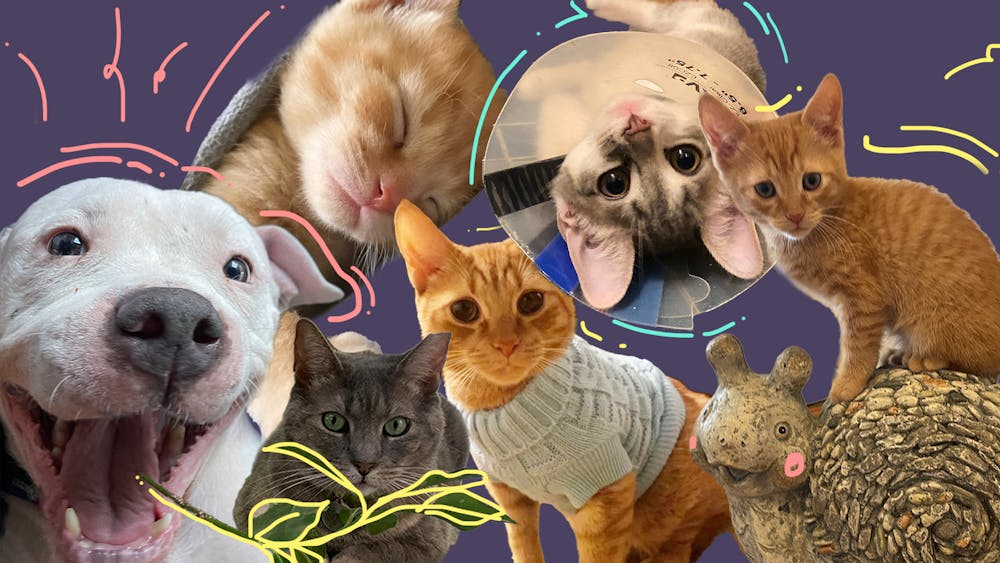Stuck in the monotonous limbo between her Spring 2022 graduation and her Fall 2022 post–baccalaureate program, Natasa Rohacs (C ‘22) was profoundly bored. There was not much to do in Philadelphia after her classmates had scattered to take on their post–grad commitments. “There was one day when I was just like, ‘I don't have a hobby right now. I need a hobby,’” Natasa says.
Luckily for her, Philadelphia Animal Welfare Society (PAWS) had plenty of furry distractions waiting for her to take them home.
PAWS is both Philadelphia’s largest animal rescue partner and a hub for all things cat and dog. They provide countless services for prospective and current pet owners, ranging from affordable veterinary care to adoption and fostering opportunities to free pet food. Liberty Britton, Communications and Grants Manager at PAWS, aptly summarizes the organization’s goals: “We want Philadelphia to see a day where every animal can have a second chance.”
PAWS was founded in 2005 by a small group of volunteers previously employed by the city shelter, ACCT Philly. Concerned by the severity of the homeless animal crisis, they hoped to support the overwhelmed intake system by pulling at–risk pets from ACCT and giving them the medical, behavioral, and emotional care that they needed. “Back then, it was really a crisis for Philadelphia’s homeless pets,” says Britton. “There were upwards of 30,000 animals coming into the city shelter every year, and only 11 percent were making it out alive.”
After 17 years of collaborative partnering with ACCT, the Philadelphia Society for the Prevention of Cruelty to Animals (PSPCA), and other animal welfare organizations, those numbers have drastically decreased. “Typically, a city or a shelter is considered no–kill if they're at a 90 percent save rate,” Britton explains. “Philly is now at an 89 percent save rate.”
Philly now sees just over 14,000 animals surrendered to the city shelter annually—a remarkable difference compared to the 30,000 they saw nearly two decades ago. However, these 14,000 animals are still in dire need of homes.
For organizations like PAWS, this is where foster care becomes critical. “The kennels for dogs and cats are really a temporary solution,” Britton explains. “We don’t want them living there any longer than they have to—it’s just not somewhere they can comfortably live for weeks or months. They’re not getting the social interaction that they want and need, and they tend to mentally decline.”
To ensure that these furry companions are set up for success, PAWS and similar animal welfare organizations have emphasized the importance of a robust foster care system. “Foster care is by far the best way to care for the animals before they find their adoptive homes,” says Britton. “It gives us the ability to learn much more about their personality, continue treating any illnesses that we found, or see if any illnesses pop up that we can then treat.”
Fostering through PAWS is a streamlined process—they require a simple online application that evaluates the environment and time commitment that the applicant can provide. If an applicant is approved, they receive an email listing all of the animals under PAWS’ care that require a foster home.
Natasa filled out that form this summer and quickly began receiving weekly lists of cats in need. It wasn’t long until a litter of kittens caught her eye. “They were just some healthy little babies that needed to be bottle fed because their mom got mastitis,” she said. “I’m guessing that she had inflammation of her breast tissue because she had seven kittens to feed.”
Four of those kittens went to other foster homes. The other three, however, became Natasa and her roommate’s summer projects. “I just chose them. I just looked at them, and I was like, ‘these ones are mine now,’” she recalls.
Sitting with Natasa on her bathroom floor, which has since become a bonafide cat condo, I counted at least five cat toys, two cat towers (“I got them off the street,” she noted), two cardboard scratching boards, a litter box, and three rambunctious kittens.
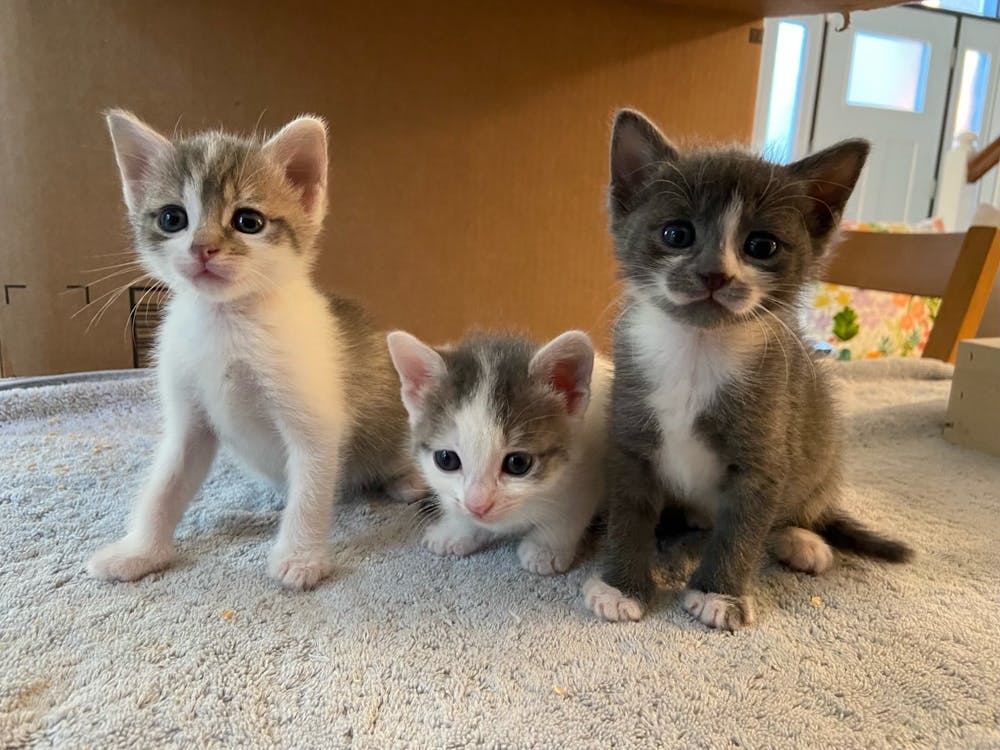
“They were originally named after cars, but we gave them new and updated names,” Natasa says, pointing at each of the kittens. “Eva, Manu, and Fernando. Well, that’s Fernandina now. We thought she was a boy, but she’s a girl.”
“They’re named after Naked and Afraid characters?” I ask.
“Oh yeah,” she replies.
The three kittens are now a bit more grown–up than they were when they first came into Natasa’s care, a product of Natasa and her roommate’s diligent bottle–feeding over the summer.
“Bottle feeding them was just pretty intense. I mean, it was really fun. And like, weirdly rewarding,” she says. “I definitely felt like a mom. I had to get up at 1 a.m. to feed them, and then also get up again at 5 a.m. to feed them, and then feed them like five more times throughout the day, which was kinda rough. It's super easy now that they're big. They just run around in here and do their own thing.”
As Natasa recounts this story, Eva crawls up her body and perches on her shoulder like a parrot. Natasa grins, reaches into her pocket for her phone, and takes a selfie. Another cat photo for her ever–expanding collection.
Natasa also owns an adult cat named Sigma, who she adopted from PAWS while the COVID–19 pandemic was in full swing. Natasa believes Sigma was originally a community cat because the tip of her left ear is missing, a standard practice of Trap–Neuter–Return (TNR) programs.
PAWS and ACCT both provide free neuters and spays for animals in order to slow the constantly multiplying stray cat population in Philly. Tammy Miller, the Foster Manager at PAWS, emphasizes the importance of this program. “While fostering is a really important part of what we do, there's always going to be more kittens,” she says. “There are over 400,000 community cats outside in Philly [...] because of this, it's really, really important to spay and neuter cats, especially outdoor community cats."
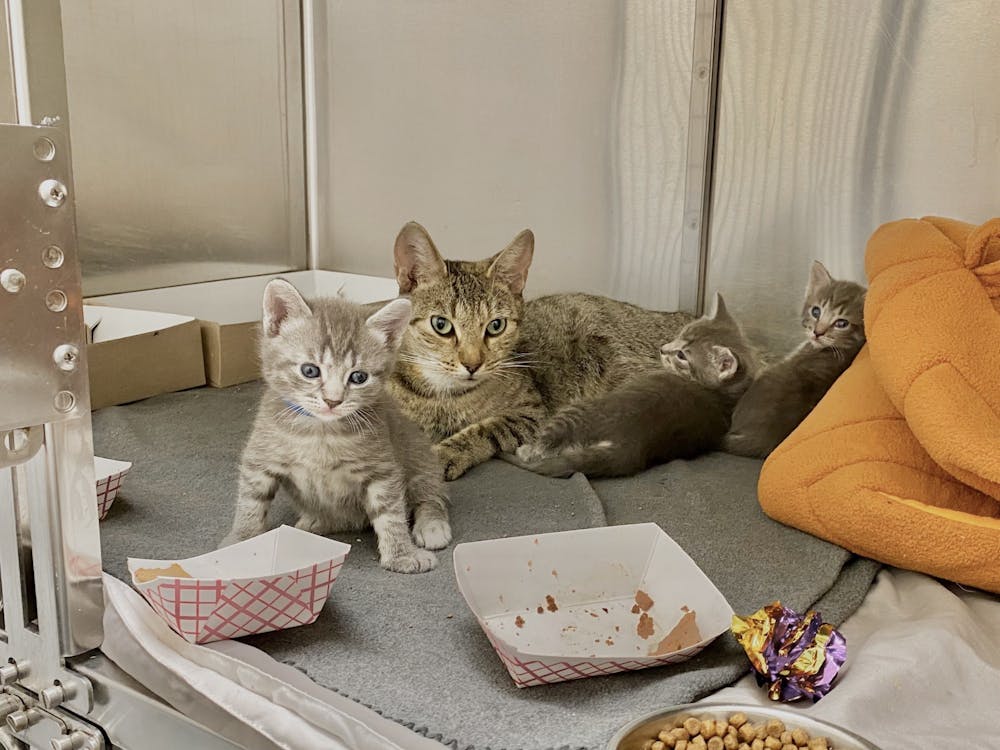
But despite PAWS and ACCT’s best efforts, not all outdoor cats in Philadelphia can receive the TNR treatment. As a result, the city shelter is constantly taking in nursing mothers and their kittens. “Moms with kittens are one of the populations that we like to pull from the city shelter because they take up lots of space while the kittens grow,” said Britton. “So we rescue them and try to get them into foster homes as soon as possible.”
For prospective kitten fosterers that aren’t interested in the time commitment that comes with bottle feeding, nursing mothers with litters are the perfect match.
Talia Fiester (C ‘23) was in a bit of a funk when she decided to foster through PAWS in 2021. “I didn't even think I really liked cats before I fostered,” she admits. “But after my boyfriend and I broke up in April, my mom said that I should start fostering cats to feel better. It happened to be kitten season then, so they had new litters every day. So I emailed them and asked if they had any litters that day for me to go and pick up.” Just like in Natasa’s case, it wouldn’t be long before Talia fell head over heels for one of PAWS’ furry friends. “They sent me a picture of a mom cat with four babies. The next day, my roommate Zara and I went and picked them up,” she says.

Photo courtesy of Talia Fiester
Ariel and her four kittens—Sebastian, Scuttle, Flounder, and Ursula—lived with Talia and her roommates for a total of eight weeks. Since they only had to feed the mother, the cost of caring for the family remained relatively low, and so did the time commitment. “It was the middle of finals season, and it still worked out,” Talia noted. “Of course, they're not as self reliant as a lot of people think that they are—cats still need to be around people and be taken care of and stuff—but I had a busy semester, and it was fine.”
“Did they help you feel better?” I ask.
“Oh my god. Absolutely. I mean, it was probably a combination of things, but I was over him in like two weeks. Every time I was sad, I grabbed Sebastian and just held him and he was like, fucking perfect. And then I kept him,” she beams.
Sebastian, as you might guess, was a foster fail; or, as Tammy Miller from PAWS likes to say, a “foster fortune.”
“So Ariel and the other kittens got adopted out really quickly after they got spayed and neutered,” Talia says. “As soon as we put their bios up on the PAWS website, we got flooded with emails from interested adopters. But Sebastian, from the beginning, was special to me. I don’t know how to describe it—he’s a special cat.”
I press her to elaborate.
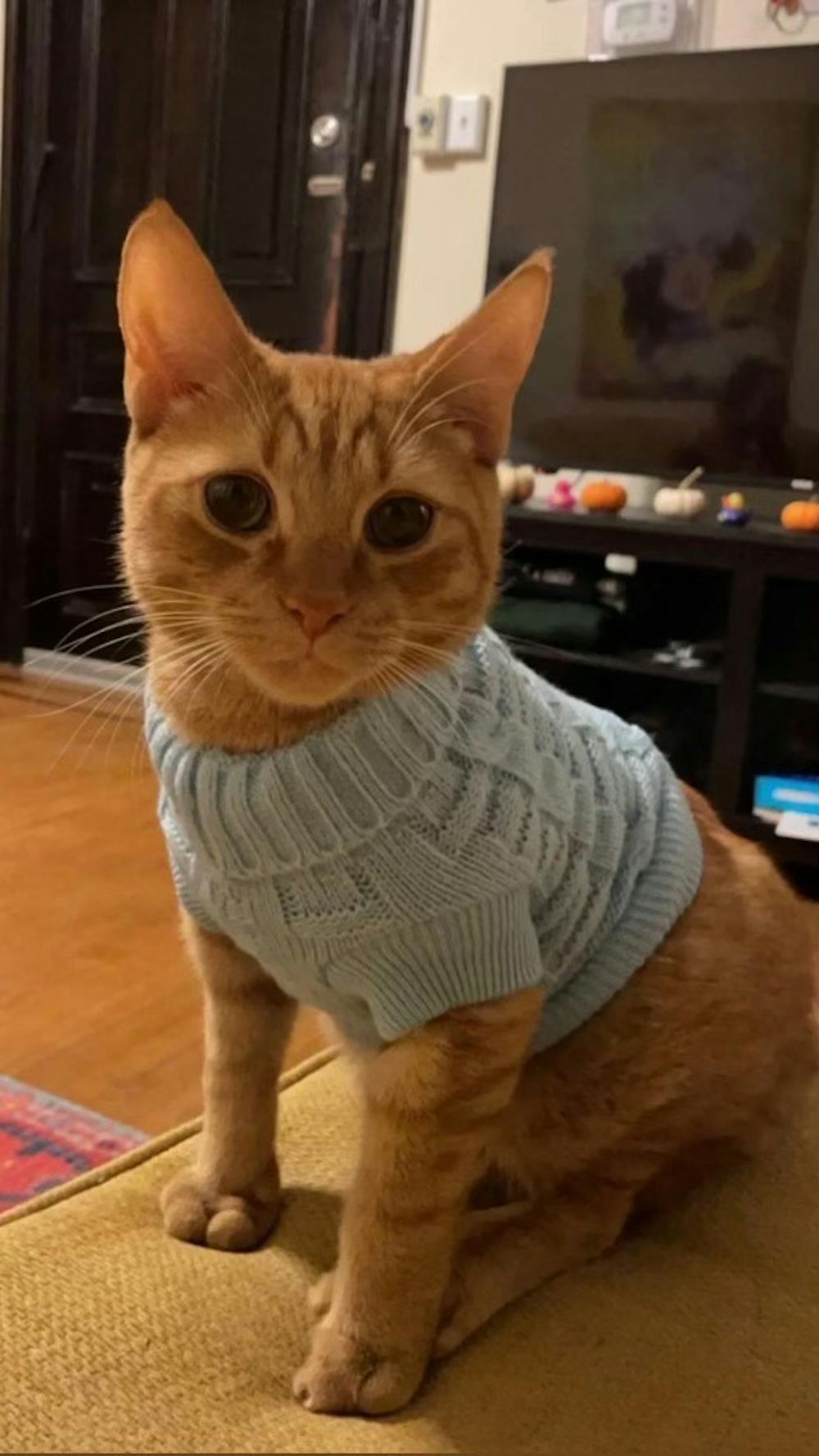
“Sebastian is just—I don’t know,” she sighs. She calls for her roommate. “Zara, do you think Sebastian is special?”
“No,” Zara calls back.
“Okay, so fuck you,” Talia jokingly retorts. “Sebastian is really social, and he likes being around people, and he’s like a dog, and he doesn’t like being left alone, and he has really bad separation anxiety. And I don’t know if special always means perfect, because he screams when the doors shut, and when we sit on the patio, he’ll jump on the window and start screeching. But, to me, he’s special.”
The strength of Talia and Sebastian’s bond is impossible to deny. In October, she threw Sebastian a half–birthday party to celebrate him turning six months old. “I wanted to soak up his kitten era before it was over, and that was pretty much the last month that I think he could really be considered a kitten because he got really big after that,” she says. “He got a little pink princess dress for the party, and we made drinks and a cake, but clearly he couldn’t eat those.”
“I’m sure he at least enjoyed the attention,” I add.
“No, I know he did,” she replies. I could practically hear her smile through the phone. “He definitely did.”
While cats are the overwhelming majority of the animals coming into the city shelter, there are also plenty of dogs in need of foster homes as well. PAWS hosts an annual Mutt Strut to show off their shelter dogs and raise money for the organization.
This year, the event falls on October 1 and will be located at the Navy Yard. “It’s an outdoor fall festival for everyone dog–loving,” says Britton. “Everybody can bring their dogs, and we do a mile and a half strut. People love to bring their dogs in costumes because it's near Halloween every year, and there’s always a costume contest.”

Packed to the brim with activities that both humans and their pooches can partake in, the Mutt Strut is as fun as it is impactful. “We have food trucks, an agility course, and yard games for both humans and pets. This year, we're introducing doggy yoga so you can stretch it out with your dog,” Britton adds.
Dogs at PAWS’ shelters also constantly need volunteers that can walk them, enforce good behavior, and provide enrichment. Becca Levy, a full–time teacher and dog lover, has found some solace in her volunteering at PAWS.
“A big reason why I keep coming every week is for my mental health,” Levy says. She had taken a break from walking a ten–year–old dog named Stewie to talk to me. “When you snuggle a big, smelly dog here and take them on a walk, they look at you and they're like, ‘Oh my god. Thanks for taking me outside.’ And it's like, ‘Of course! I had a hard time taking myself outside today. But I see how meaningful it is for you. And I'm so glad that both of us are outside right now.’”
During the summers of her sophomore and junior years, Esha Srinivasan (C ’24) took on the challenge of fostering not one furry friend but two—a dog and a cat. Esha loves animals. A Penn junior studying biochemistry, she has always dreamed of working in medicine—the veterinary kind. “In high school, I volunteered for a turtle rescue,” she says. “I used to rehabilitate turtles, or ‘foster’ turtles.”
It was only fitting that she would continue to foster animals into college, which she jumped at the opportunity to do the summer after her freshman year. Living alone in a studio near campus, she decided she needed some company in the form of a black cat named Quinn.
“Super cute. Love of my life. I got a tattoo in his honor,” she says, revealing a tattoo of a tiny black dragon on her hip.

Esha, perhaps unsurprisingly, also devotes much of her time to her work with Penn Vet. “I’m working in a research lab and studying COVID–19 in cats and dogs,” she says. The summer after her sophomore year, Esha received an email from Penn Vet. An emaciated female stray dog had been found and dropped off by a police officer. While they had already identified a rescue organization that could take the dog in, they needed someone to foster her in the meantime.
Esha immediately volunteered. “I can't have pets in my current apartment,” she tells me. “So I wanted to take that opportunity to have a pet over the summer.”
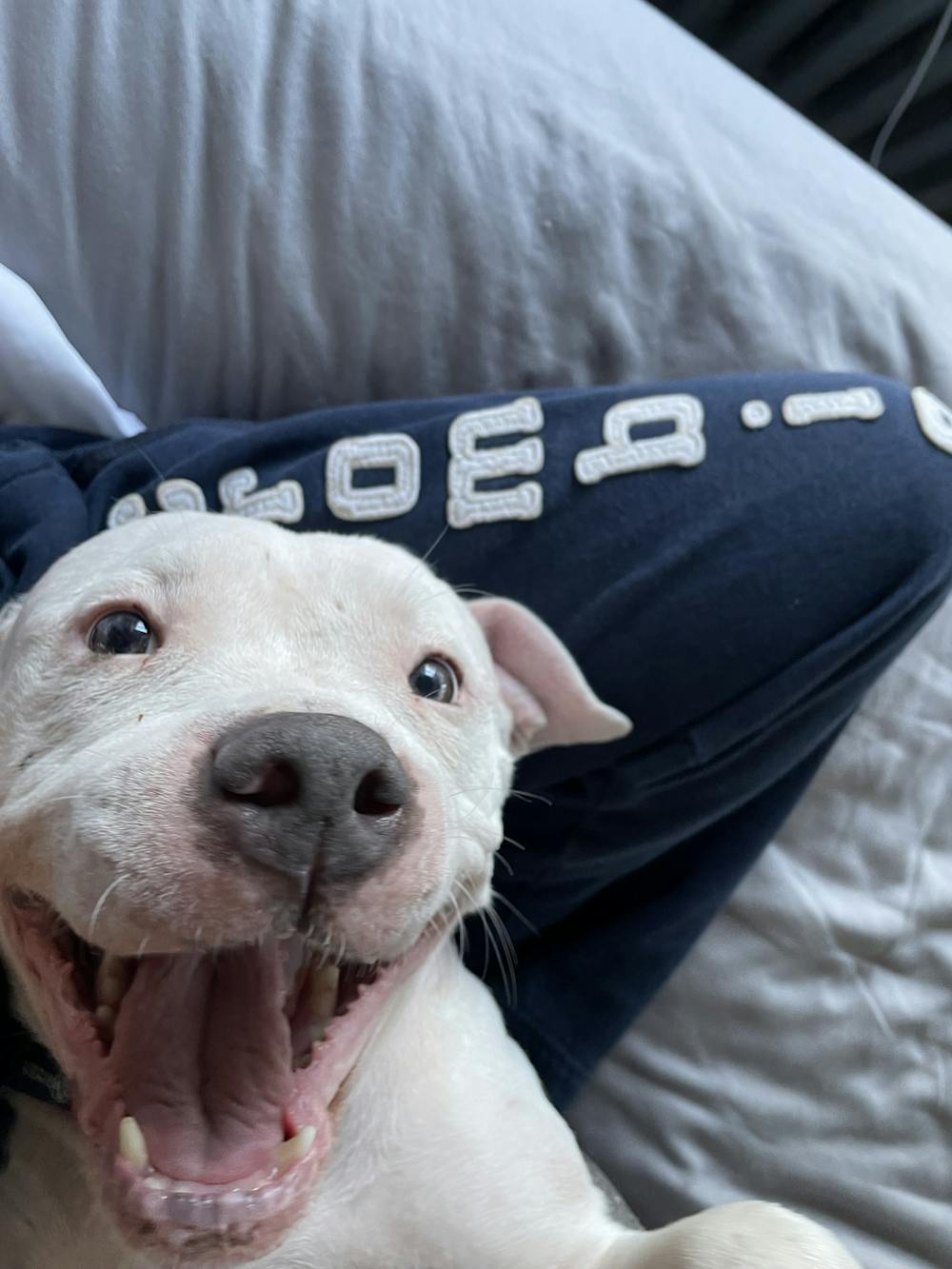
Esha had also suffered a terrible loss in February. “My family dog, Curly, passed away. He was only eight, so when he got [diagnosed with] cancer, I was like, ‘What just happened?’” she recalls. “It was the worst thing that ever happened to me because it was so sudden. It just seemed like the universe was saying ‘fuck you.’ He was literally like my little brother.”
She found that fostering the dog, who she lovingly named Dory, helped her cope with her grief. “I just missed life with a dog, and I found that fostering Dory was really helpful. Dory would do something, and I'd be like, ‘Oh, Curly would never do that.’ Or, ‘That's exactly what Curly used to do.’ I was thinking about Curly just as much as I was before when I was sad, but my memories of him didn’t hurt me anymore because, well, how can you be sad when you're with a dog? Her company just made me happier than I possibly could’ve been without having an animal in my life.”
I ask her if she would ever foster again while living in Philly.
“I was thinking of adopting next time. I'm super bad at not falling in love with every foster that I have,” she laughs.
Although great strides have been made in the past ten years, the fight against the homeless animal crisis in Philly is ongoing.
“We are in desperate need of new foster parents,” Miller emphasizes, scrolling through dozens of drafted foster pet profiles for the PAWS website. “There's been a very big drop in foster interest over the past year, and I think it’s related to COVID–19—there was a very big spike in interest when COVID–19 hit, and everyone was getting rescued. But since people have been going back to work and their lives, we've seen a drop in interest, and we just really need your help. We can't do what we do without support from foster parents.”
Esha leaves me with some parting advice for prospective foster parents, reminding them of how meaningful the work of temporarily sheltering an animal can be. “I think it could be good to practice giving them as much love as you can, and then letting them go,” she says. “That's the hardest part about fostering—I don't want to restrain the love that I'm giving this animal because they've been through so much. I can't even imagine the trauma they've been through on the streets, and they deserve every ounce of love and affection that I can give them.”
This exchange of unconditional love between human and animal is the essence of what makes fostering a pet so special, Esha says. While their time together is often fleeting, the stories of Penn students and their furry companions epitomize how lasting the bonds built by Philly’s foster system are. “That's what being a foster parent is—you're supposed to make them feel like they're gonna be loved forever. Then they’ll meet their new family, and you have to let them grow their wings and fly away.”
